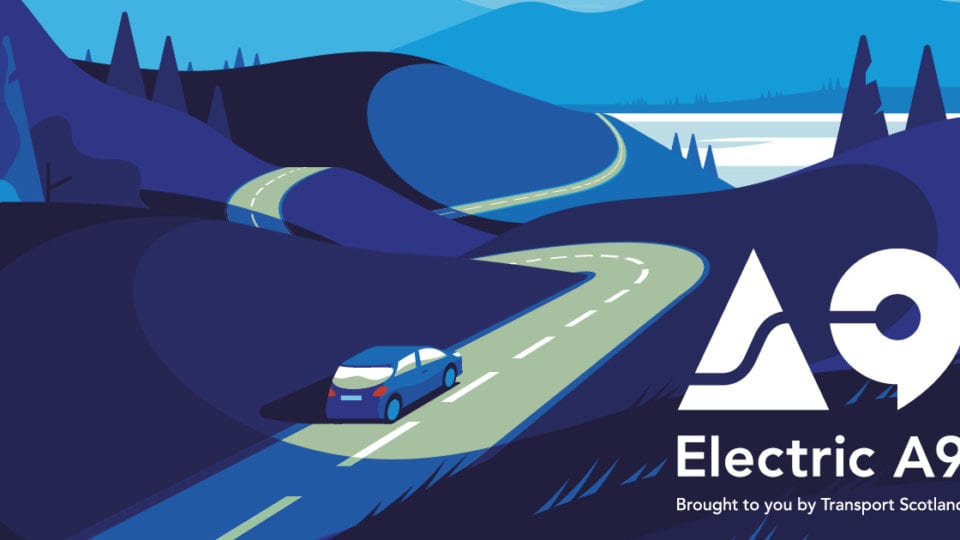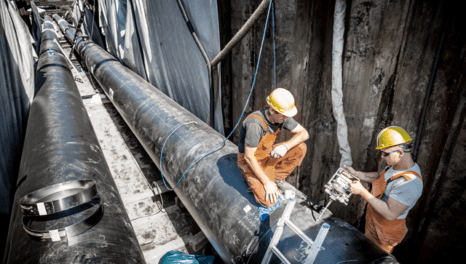The road to a low carbon future
Scottish and Southern Electricity Networks' (SSEN) EV readiness manager, Richard Hartshorn, discusses the distribution network operator's role in the transition to a low carbon world for drivers, tourists and consumers.
6th November 2019 by Networks

The energy industry continues to go through a period of rapid transformation, from the huge growth in renewable electricity generation to the move to local, flexible grids to unlock the value of new technologies such as electric vehicles, micro generation and battery storage. To help meet the UK’s ambitious climate change targets, industries and communities must rapidly transform to develop alternative, greener sources of heat, power and transport.
As the distribution network operator for the north of Scotland and central southern England, it’s our job to ensure the transition to a low carbon world is as smooth as it possibly can be. One of the most prominent challenges we’re embracing is the shift to decarbonise transport, and for us at Scottish and Southern Energy Networks (SSEN), understanding and managing the impact of electric vehicles (EVs) and other low carbon technologies is now a vital aspect of how we operate and invest in our electricity networks.
We need to understand the impact this extra demand may have on our infrastructure, finding flexible solutions to ensure the move to the new, and exciting, low carbon world is seamless. This means finding innovative ways to accommodate the extra demand EVs will place on the system, and avoid the need for costly new infrastructure which impacts on customer bills.
Our My Electric Avenue project, delivered between January 2013 and December 2015 by EA Technology on behalf of SSEN as part of the Low Carbon Networks Fund innovation projects, was recognised for its exceptional performance by the energy regulator, Ofgem, who deemed it of “huge benefit to GB electricity customers”. The Office for Low Emission Vehicles (OLEV) noted that the project “helped give the government confidence to push ahead with the wide scale electrification of transport”.
The project artificially created streets of the future, with “clusters” of EV users, to help us understand the impact this extra demand would have on our networks, enabling us to trial smart technology which allowed us to monitor and manage demand.
Alongside this, our Smart EV project is looking at creating a standard for how a charger can be adjusted when it’s on to avoid network overloads and address any sharp increases in electricity demand.
By working closely with industry partners and the EV supply chain to develop managed charging solutions, we can help develop the flexible and low carbon electricity network that work for GB electricity customers.
Putting EV on trial
At a local level, we are working with local authorities in the rollout of EV charging infrastructure, which supports efforts to tackle air pollution in our towns and cities. SSEN and Dundee City Council have created several charging hubs featuring solar canopies and the ability to integrate battery storage in the future. In Oxford, the “Go Ultra Low Oxford” project is trialling innovative on-street chargers to help advance the electrification of transport for residents.
The Scottish government has introduced an ambitious target to eradicate the sale of petrol and diesel vehicles by 2032, eight years earlier than the UK wide target. One of their key projects is the creation of the first EV superhighway, the Electric A9, which runs through much of our distribution patch, from the Scottish central belt and north to Inverness. We’re supporting Transport Scotland with this exemplar project and look forward to its development and similar schemes across the country.
Similarly, Scotland’s North East 250 route aims to have enough EV charge points to enable visitors to enjoy visitor attractions along the road trip route, including distilleries, castles and museums while their vehicle charges, benefitting businesses and EV users alike. We’ll be implementing a feasibility study later this year to help understand the requirements of each registered location to make this electric aim a reality.
The world we live in is changing, and our needs, expectations and behaviours as consumers are evolving. It’s up to us as network operators to ensure we’re ready to play our part in the vital transition to a clean, green, low carbon world.
Comments
Login on register to comment
Related content

Heat
Electric storage heating – a Cinderella solution
Why has electric storage heating been overlooked as we seek to tackle decarbonising domestic heat?

Heat
Prospects bright for landmark East London Heat Network
New Vattenfall-Cory partnership marks step towards record-breaking heat network capable of serving over 10,000 homes

Heat
New construction director at Switch2 Energy
Appointee brings experience from Vattenfall and Eon
Related supplier content
![‘Learning by doing’ on the road to net zero [test product]](https://networksonline.s3.amazonaws.com/products/images/3.jpg)
People & Skills
‘Learning by doing’ on the road to net zero [test product]
DSO director Andrew Roper discusses 'Learning by doing'

Power
Load patterns and lockdown: how Covid-19 is impacting electricity networks
Insights into dynamics on the low voltage network as the outbreak unfolds

Downloads
Protect electrical equipment from insulation failure
Insulation faults are a major cause leading to the eventual failure of electrical equipment. Partial discharge (PD) is a very reliable indicator of developing insulation faults. Regular PD testing allows users to detect and analyze PD activity